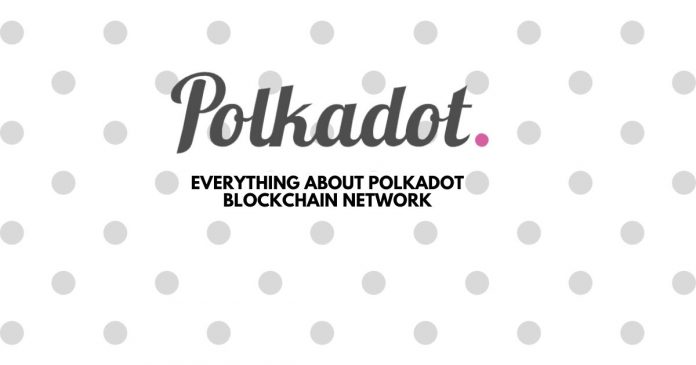Polkadot is a global network of interoperable chains, and networking solution for blockchains to operate safely and reliably with each other.
The development of the Polkadot network relied on a broad vision for a web that returns control to individuals over internet monopolies.
Polkadot, unlike many blockchains with the capability to process a limited amount of traffic, can thus handle many transactions on several chains in parallel. Invariably, this results in eliminating the bottlenecks that occur on legacy networks processing transactions one-by-one.
When compared with other networking protocols, Polkadot not only allows the transfer of value across chains but also enables transfers of any kind of data.
On Polkadot, each blockchain can have a novel design optimized for a specific use case. That means blockchains can offer better services, while also improving efficiency and security by leaving out unnecessary code.
Kusama initiative
The launch of Kusama, an experimental network within Polkadot’s ecosystem, took place in August 2019. One important point to note here is that it is not a testnet, but an unaudited network built on Polkadot v0.5.0. And the goal of the Kusama network is to understand and test the technology under “real” economic conditions.
Notably, Kusama began as a Proof-of-Authority network, but validators can already issue their intention to operate on the network.
The entity that is behind the Polkadot project is Web3 Foundation. It acts as treasurer and council for Polkadot. Also, it ensures the development of the project and its ecosystem. It not only backs Polkadot but also other protocols such as Kusama.
Essentially, Web3 comprises a decentralized messaging protocol, community events, and funds other protocols such as Ethereum as well.
Main characteristics of Polkadot blockchain
- Interoperability: Polkadot allows blockchains to interact trustless. It implies that through this network, all connected blockchains can transmit value, including messages or any kind of data, in a way that they can trust each other.
- Scalability: There are two ways to enhance blockchain scalability, vertical and horizontal stability. Vertical scalability consists of increasing transaction throughput (TPS). Although, like other networking protocols, it focuses on horizontal scalability and architecture with multiple interoperable chains running in parallel, making the network infinitely scalable in theory.
- Shared security: The Polkadot model currently shares the same pool of validators. This enables the whole system to move together in one step if there is one transaction on a parachain and thus improves trust within the ecosystem. With shared security, all blockchains have the same security guarantees. As a result, users can immediately trust the validity of a parachain and of the whole network, which is secured by its native DOT tokens.
- Governance: Polkadot claims to be a self-amending chain that can evolve without forks over time through new features and bug fixes. In the beginning, entire network control will be with the DOT token holders. And the responsibility for network modification will be with the stakeholders through governance. Notably, the governance model is still under design and might evolve to include other stakeholders. In addition to public referendum voting, other measures will be set up, such as a council and other voting schemes.
- Development: Polkadot is a developer-oriented protocol focusing on ecosystem buildup. And the blockchain evolution is easy with Substrate, an optional modular framework, and the development kit for building applications. Developers can thus save a significant amount of time when building their chain or app, and focus on their business logic.
Components of Polkadot ecosystem
According to Medium blog post explaining the Polkadot ecosystem, its network design hinges around the following crucial components:
- Parachains: Application-specific blockchains built to interact with Polkadot. It attaches to the security provided by a relay chain and its validator pool rather than providing its own.
- Relay chain: This is in charge of checking the validity of all the parachains, ensuring they operate correctly, and finally, securing them.
- Solo-chains with bridge: Solo-chains are completely sovereign chains such as Ethereum. Also, they can be bridged into Polkadot’s network to communicate with its various blockchains.
- Validators: Responsible for verifying and adding blocks to the relay chain. They can also be fishermen.
- Collators: This role goes to those who bundle transactions on the parachain which they are monitoring. The collation of the transactions turns them into blocks and collators send proof of this block to validators. They can be fishermen as well.
- Nominators: Polkadot uses the Nominated Proof-of-Stake (NPoS) consensus algorithm. As part of this mechanism, nominators can delegate their voting power for the option of electing validators. Essentially, they share the risks and rewards of maintaining the decentralization and security of the network.
- Fishermen: Fishermen monitor bad behaviors. If there is any proof of an invalid block, whoever submitted that block will have their DOTs slashed. The fishermen will then receive part of the staked DOTs from the malicious actor. As mentioned, either validators or collectors can take up this role. And, in turn, are expected to police themselves for a share of the slashing rewards in case of any misbehavior.
Recently, Coinbase Custody announced support for Polkadot staking in a joint venture with Bison Trails. Last year, Polkadot had partnered with Blockchain.com. This happened after it reported a sale of 500,000 tokens to the Web3 Foundation.




























